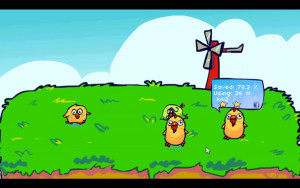Gamification for energy saving
Energy saving is surely one of the features which can play an important role in the climate change crisis, and already in a previous post, I illustrated the causes why I reckon it’s important to act on people behaviour, reducing their superficiality when it comes to simple tasks which potentially might have a dangerous effect on large scale.
Still an argument not new on this blog is the smart grids, a technology in my opinion fundamental to optimise energy saving.
Smart grids allows to distribute only the amount of energy that people need, depending on their necessities. It is a great technology, which is increasingly growing also thanks to the support of IoT and other technologies which allow its ubiquity and efficacy.
Analysing the smart grids it’s possible to consider the process as a chain: the energy goes from the source, through the distribution network, to the condensators and finally to houses and utilities. At that point humans play their role, using the energy. Now this process allows to optimise the emission of energy, but the amount of energy which is eventually used still depends on humans, the are the ones who actually decide how much energy to use. Thus, to further optimise this system it’s important to act also on human behaviour and this is something which only designers can possibly do. Engineers can act on the technologies and improve them as much as possible, but it’s designer’s tasks to influence people behaviour, which can’t be forced or imposed through mechanisms.
“A designer has always been a teacher, in a position to inform and influence the client. With the present environmental mess it is even more important that we help to guide the intervention of design with nature and mankind.”
Viktor Papanek
Existing projects
To begin, I had a look to existing projects aiming to change people behaviour to make them save energy with the use of gamification.
And I found mainly 3 of them Energy Chickens, Joulebug and Cool Choices.
Energy Chickens
Energy Chickens encourages people to keep their virtual chickens healthy by engaging in basic energy-saving behaviour around the house.

Cool Choices
With it’s tagline “Save money, help the environment and have fun.”
The group approaches major companies and develops games where co-workers compete to save as much energy as possible.
Employees are given points when they take action, like when they watch less TV, maintain appropriate car tire pressure or air seal their homes.

Joulebug
Through JouleBug, people get points for a number of actions, like using a reusable mug or grocery bag. Users build on their actions to receive trophies and share their accomplishments with their friends. They can also sign up for fee-based contests.
I briefly analysed these applications, but I found quite a few problems, which might be big limits.
Joulebug for example it’s somehow motivating because of a leaderboard populated of friends and for its badges, but I can see that it’s something which might last for a week or something, soon you would be asking yourself “why am I doing this?”.
Furthermore, all data are inserted manually. The user has to say to the app that he did a good action, so firstly he has to remember that, secondly it’s not accurate at all, there is no way to check if somebody is cheating. Clearly, not a good game.
Regarding, Energy Chicken and Cool Choices instead, they have a very limited range of action, they are only for corporates, because employees are kind of forced to play the game. That’s an huge limit in my opinion a game has to be spontaneous and natural, it can’t be imposed.
On the other hand, I believe that in the sport field there are some apps which use gamification in a much better way. It’s the case of
Nike+ and Runtastic. They not only are fun and spur people to do more sport, having a simple and clear interface which shows users data about their performances, the track they run and compare their results in real time with other users. These two apps, not only create and engagement for the user, but enrich the whole sport experience, supplying data to user, conversely to what Joulebug does.
Results from gamification projects for energy saving:
Results of gamified activity are really scarce and difficult to find. However, a new study released by the American Council for an Energy-Efficient Economy (ACEEE) found that gamification could encourage energy savings of 3 to 6 percent among large groups and as much as 10 percent in smaller groups.
Furthermore, there have been a few energy-saving games in which the winners achieved remarkable reductions:
- The energy Rock Stars of Bellevue, Washington. 94% reduction
- San Diego family that won its city’s title of Biggest Energy Saver. 46% reduction
- The winner of Brooklyn’s Reduce the Use. 49% reduction
- winning multifamily building in the Chicago Neighborhood Energy Challenge. 34% reduction

